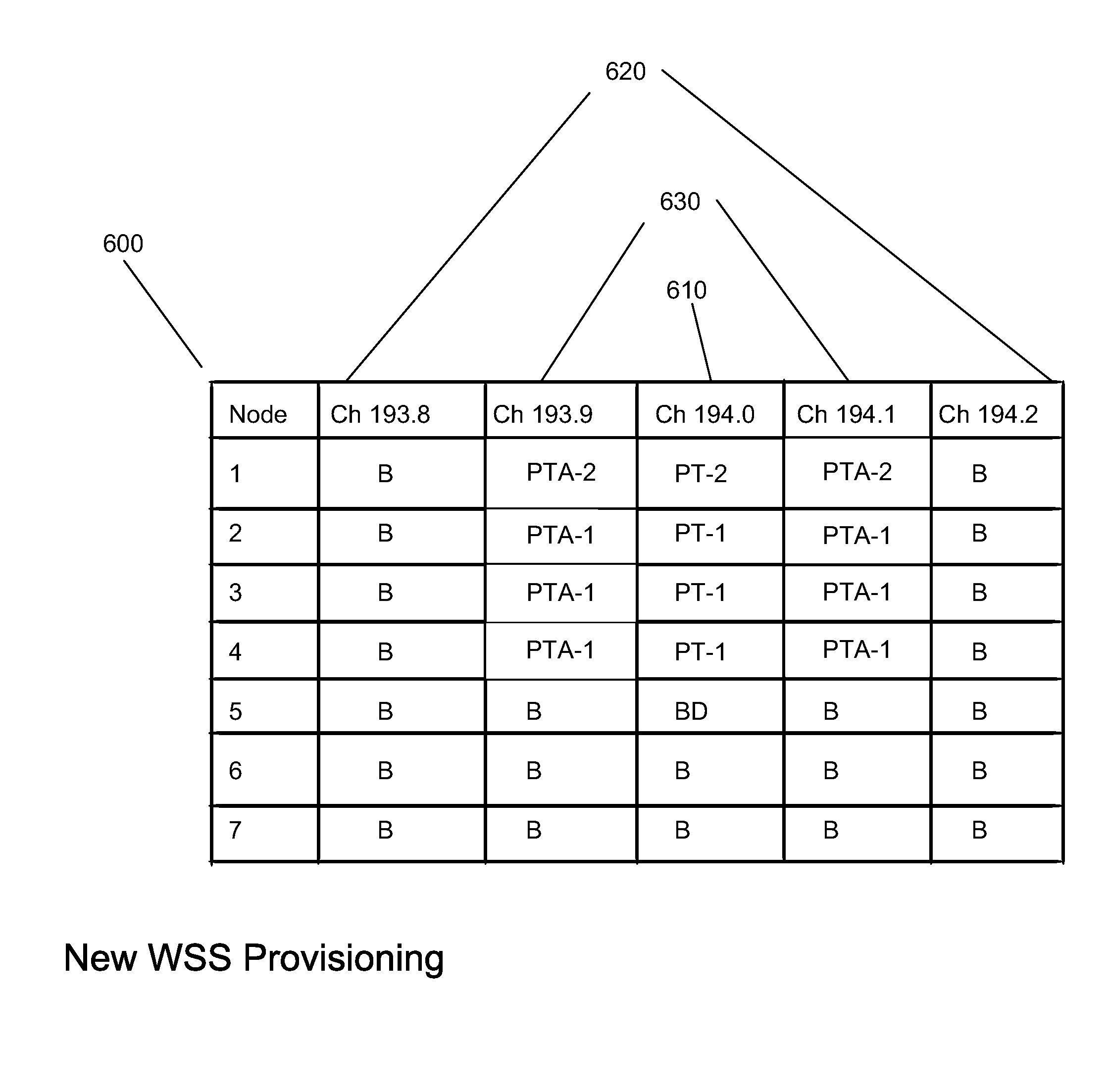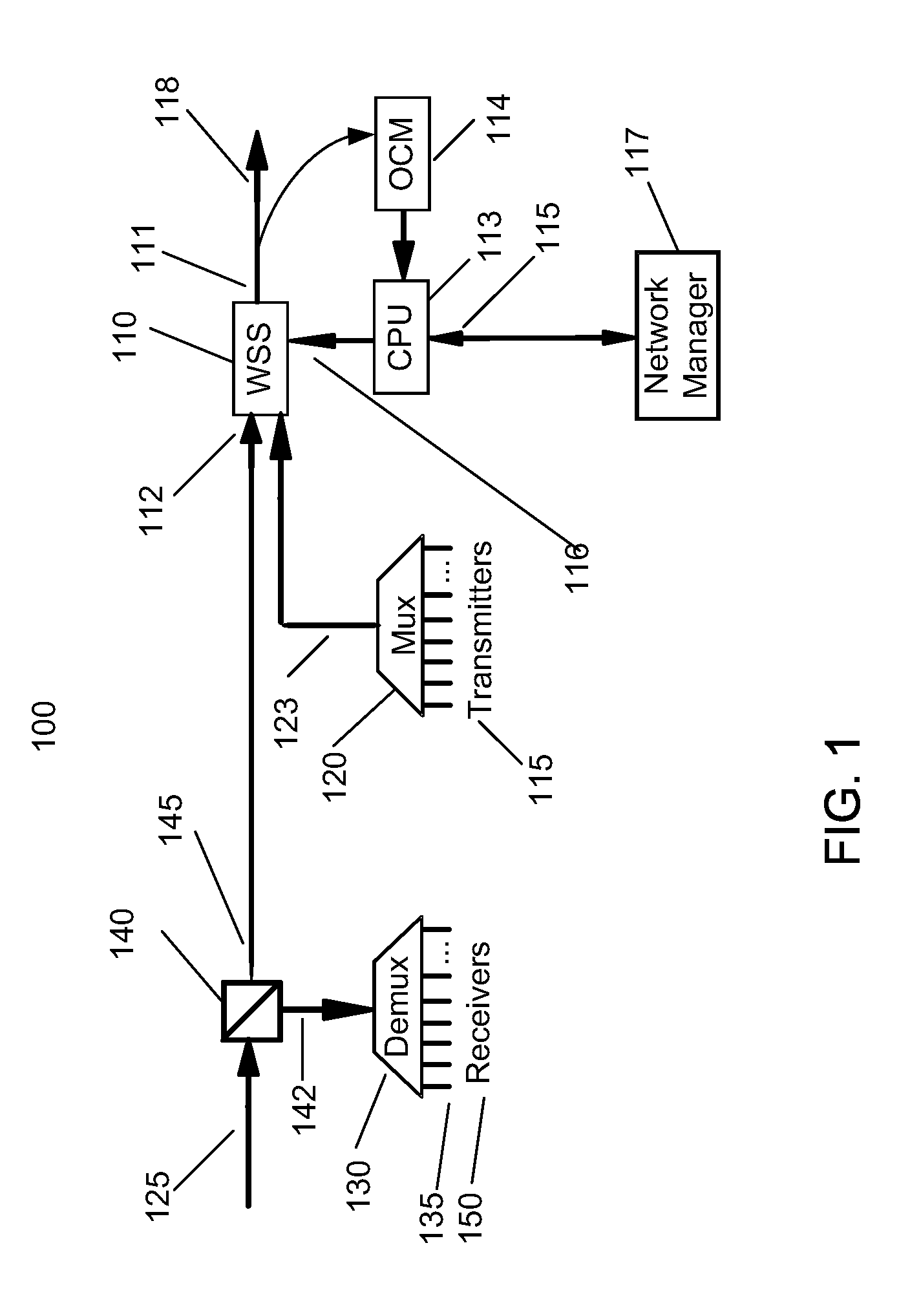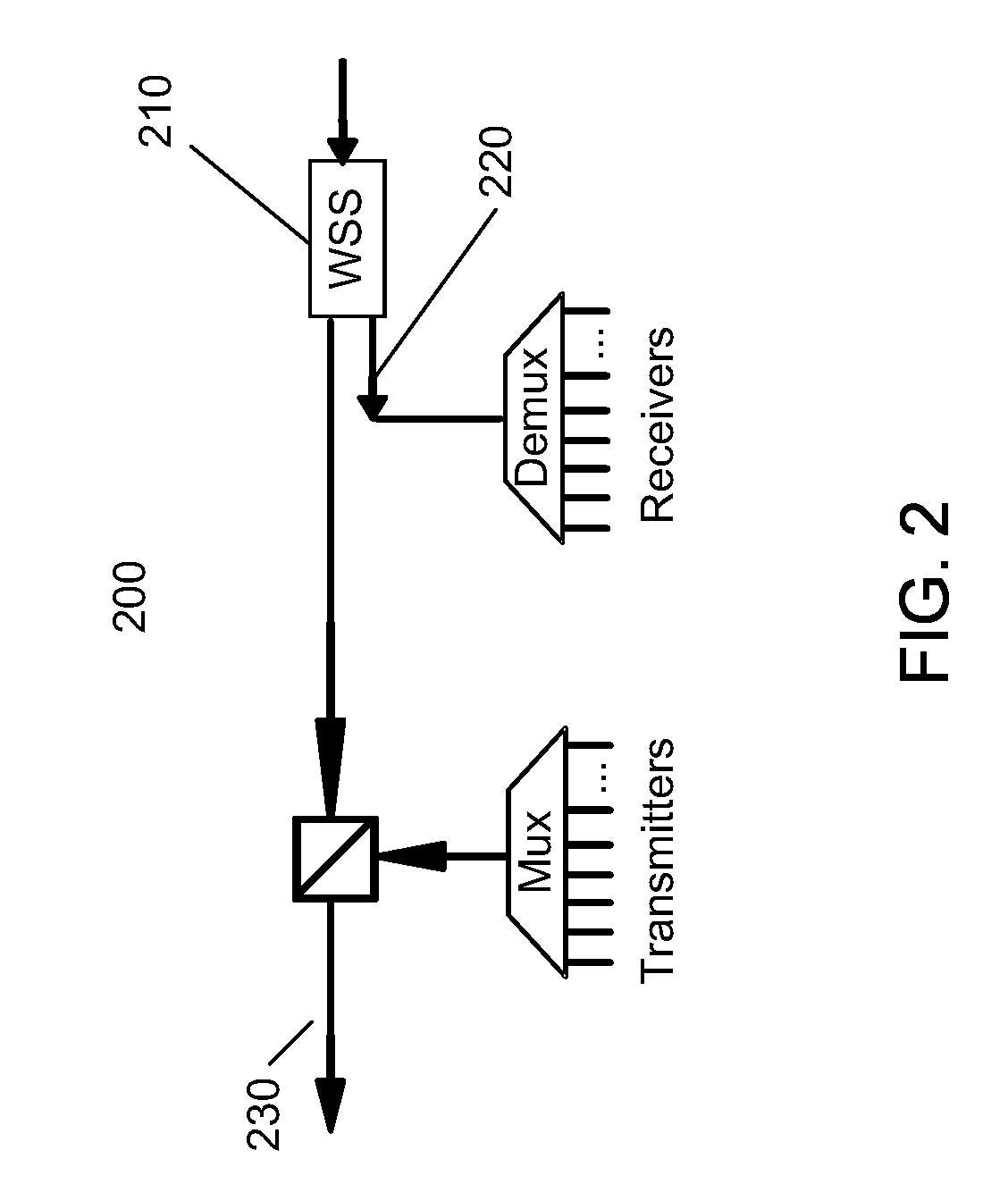Minimizing bandwidth narrowing penalties in a wavelength selective switch optical network
a wavelength selective switch and optical network technology, applied in the field of wavelength division multiplexed optical communication networks, can solve the problems of bandwidth narrowing and bandwidth narrowing, and achieve the effect of minimizing bandwidth narrowing penalties
- Summary
- Abstract
- Description
- Claims
- Application Information
AI Technical Summary
Benefits of technology
Problems solved by technology
Method used
Image
Examples
Embodiment Construction
[0040]Embodiments of the present invention described below include architectures and methods of provisioning WSS modules in an optical network so as to minimize bandwidth narrowing effects while preventing instabilities from circulating ASE and enabling channel reuse. In these embodiments, the operation of the WSS devices is described in the context of a ring WDM optical network which supports a plurality of channels with central frequencies on a pre-defined grid of 100 GHz, such as 193.0 THz, 193.1 THz, etc. However, it will be appreciated that the particular channel spacing used in these embodiments can vary, and that even uniform channel spacing is not essential. Moreover, while these embodiments employ a “degree 2” WSS network in a ring topology, the present invention is equally applicable to more generalized topologies and higher-degree WSS nodes.
[0041]FIG. 1 illustrates one embodiment of a reconfigurable optical node 100 that uses a WSS module 110 in a filtered add configurati...
PUM
 Login to View More
Login to View More Abstract
Description
Claims
Application Information
 Login to View More
Login to View More - R&D
- Intellectual Property
- Life Sciences
- Materials
- Tech Scout
- Unparalleled Data Quality
- Higher Quality Content
- 60% Fewer Hallucinations
Browse by: Latest US Patents, China's latest patents, Technical Efficacy Thesaurus, Application Domain, Technology Topic, Popular Technical Reports.
© 2025 PatSnap. All rights reserved.Legal|Privacy policy|Modern Slavery Act Transparency Statement|Sitemap|About US| Contact US: help@patsnap.com



